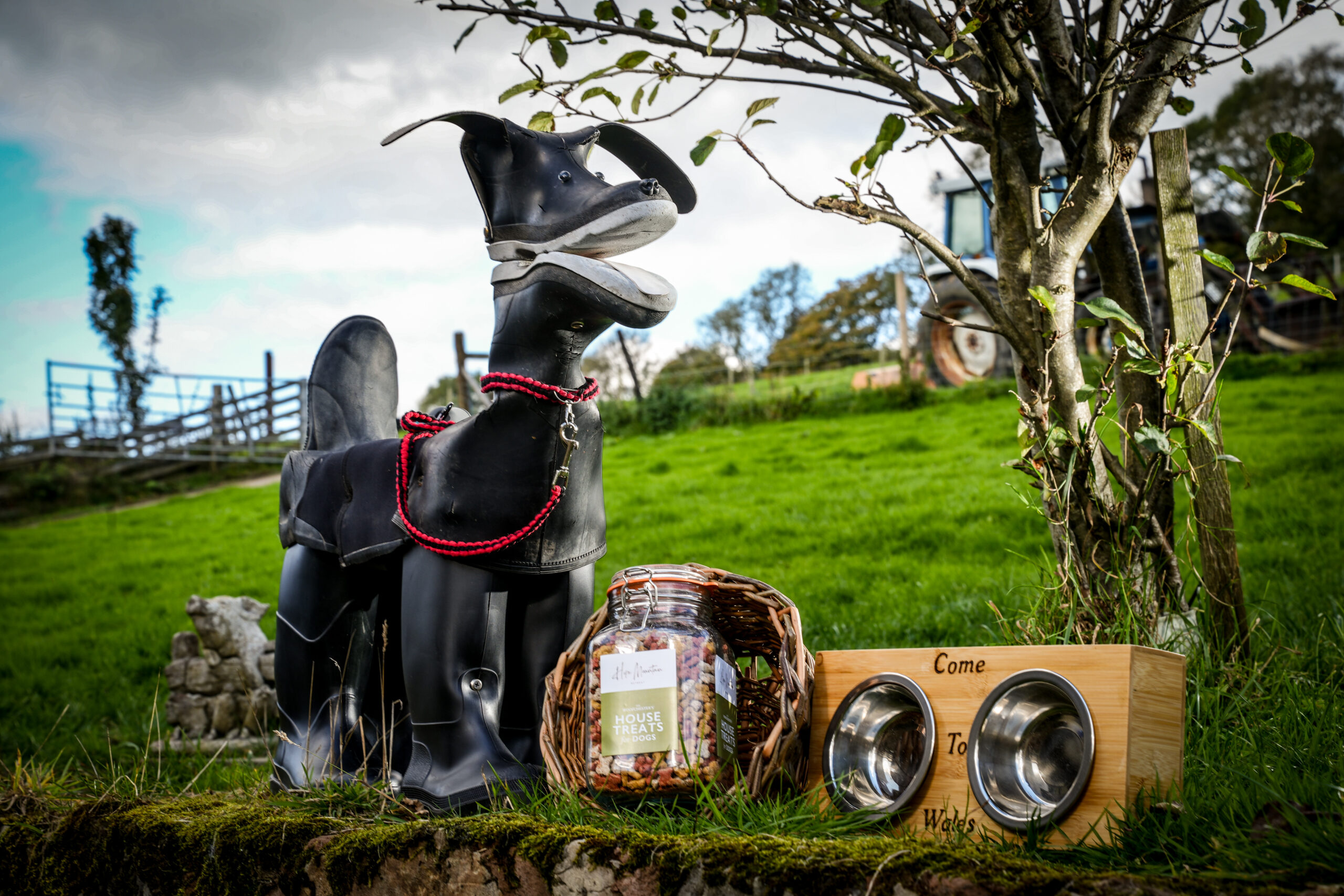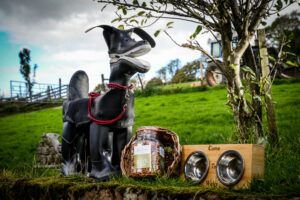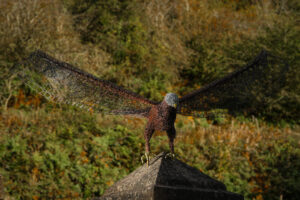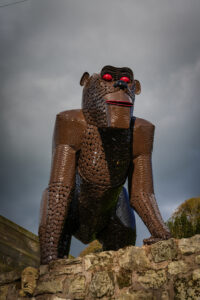Hope Mountain Retreat
Located close to the Welsh-English border, Hope Mountain Retreat stands within 18 acres of glorious countryside, set against the stunning backdrop of the Clwydian Range and Dee Valley Area of Outstanding Natural Beauty, a place of heather-covered hills, deep river valleys and leafy country lanes.
Owners Jo and Rob Smith have been welcoming guests to the tranquil surroundings of Hope Mountain since 2007, and they take great pride in offering something just that little bit different and special, transforming a stay here into a truly outstanding and memorable experience.

About us
With spacious on-site parking, beautiful rooms, and lush Welsh breakfasts freshly cooked to order on Jo’s trusty Aga, you can be sure of enjoying a pleasant, comfortable, and relaxing time here.
Hope Mountain Retreat is dog friendly (resident flat-coat retrievers Bill and Ben will make you and your furry companion very welcome!) and livery facilities are available should you wish to bring your horse or pony on holiday with you to enjoy the many miles of trekking in the area.
In addition, Hope Mountain Retreat offers an exciting itinerary of events, such as cookery classes, well-being and painting workshops, corporate events, and more, with new activities regularly being added.
THE RED KITE: THE WELSH FIREBIRD
Rob and Jo Smith of Hope Mountain Retreat (B&B) have chosen the red kite for their Flintshire Trail sculpture. Once critically endangered, these striking birds, recognisable by their red-brown plumage, distinctive forked tail and impressive wingspan, are now a common sight in the skies across many parts of the country.
That we are still able to see this beautiful bird and hear its evocative, mewling call is a privilege we must never take for granted, however. Over a 200-year period of widespread persecution, including trapping, shooting and poisoning, red kites were driven to the brink of extinction in the UK, with only a few breeding pairs remaining in remote parts of Wales by the mid-20th century.
In a groundbreaking reintroduction effort spearheaded by the Royal Society for the Protection of Birds (RSPB) and other nature conservancy bodies, birds imported from the Navarra region of Spain, together with two from Wales, were released in the Chiltern Hills on the Oxfordshire/Buckinghamshire border, on 10th and 19th July 1990. Following further reintroductions over the years, and ongoing conservation work in Wales, red kite numbers have made an amazing recovery. There are now in the region of 1,800 breeding pairs in the country, making up around 7% of the world’s population. This reintroduction has been celebrated by the RSPB as “the greatest success story in UK conservation history.”
Today, red kites can regularly be seen in regions including the Chilterns, Wales, parts of Scotland, Northern Ireland, and the Isle of Man. Circling and drifting on elegant, outstretched wings, they use their keen eyesight to spot carrion or small mammals, though they will also scavenge roadkill or even visit gardens where food is put out.
Their nests are typically messy and untidy, often built on top of abandoned crow’s nests, lined with sheep’s wool and adorned with various items such as paper, plastic, and cloth. Historically, in the days when they were in greater numbers, and common in towns and cities, red kites were even known to steal laundry from washing lines to use as nest material – a behaviour referenced by Shakespeare in ‘The Winter’s Tale’: “When the kite builds, look to lesser linen.”
To witness these magnificent birds soaring overhead is a thrilling reminder of the beauty we almost lost forever. Voted the national bird of Wales in 2007, the red kite’s return to the country embodies the spirit of a nation deeply connected to its history and identity, standing as a burning, vibrant symbol of stewardship, hope, and survival.

Contact Information




